X-Trident Panavia Tornado for X-Plane 11
Introduction
The RAF website and Wikipedia provide the following information about the aircraft: The Panavia Tornado is a family of twin-engine, variable-sweep wing, multirole combat aircraft, which was jointly developed and manufactured by Italy, the United Kingdom, and West Germany. There are three primary Tornado variants: the Tornado IDS (interdictor/strike) fighter-bomber, used for the suppression of enemy air defences, Tornado ECR (electronic combat/reconnaissance) and the Tornado ADV (air defence variant) interceptor aircraft.
The Tornado was developed and built by Panavia Aircraft GmbH, a tri-national consortium consisting of British Aerospace (previously British Aircraft Corporation), MBB of West Germany, and Aeritalia of Italy. It first flew on 14 August 1974 and was introduced into service in 1979–1980. Due to its multirole design, it was able to replace several different fleets of aircraft in the adopting air forces. The Royal Saudi Air Force (RSAF) became the only export operator of the Tornado in addition to the three original partner nations.
A tri-nation training and evaluation unit operating from RAF Cottesmore, the Tri-National Tornado Training Establishment, maintained a level of international co-operation beyond the production stage. Including all variants, 992 aircraft were built. The Tornado has been in service for more than 30 years, but a combination of major upgrade programmes and numerous continual enhancements have kept the aircraft amongst the forefront of all attack aircraft.
It remains one of the very few aircraft in the world that is able to operate at low level, day or night and in poor weather, and is now equipped with a modern precision-guided weapons suite and world-class reconnaissance sensors.
Specifications:
- Crew: 2
- Length: 16.72 m (54 ft 10 in)
- Wingspan: 13.91 m at 25° wing sweep, 8.60 m at 67° wing sweep (45.6 ft / 28.2 ft)
- Height: 5.95 m (19.5 ft)
- Wing area: 26.6 m2 (286 ft2)
- Empty weight: 13,890 kg (30,620 lb)
- Loaded weight: 20,240 kg (44,620 lb)
- Max. takeoff weight: 28,000 kg (61,700 lb)
- Powerplant: 2 × Turbo-Union RB199-34R Mk 103 after-burning turbofans
- Dry thrust: 43.8 kN (9,850 lbf) each
- Thrust with afterburner: 76.8 kN (17,270 lbf) each
Performance:
- Maximum speed: Mach 2.2 (2,400 km/h, 1,490 mph) at 9,000 m (30,000 ft) altitude; 800 knots, 1,482 km/h, 921 mph indicated airspeed near sea level
- Range: 1,390 km (870 mi) for typical combat mission
- Ferry range: 3,890 km (2,417 mi) with four external drop tanks
- Service ceiling: 15,240 m (50,000 ft)
- Rate of climb: 76.7 m/s (15,100 ft/min)
- Thrust/weight: 0.77
The Tornado has been employed by the Royal Air Force, German Air Force, German Navy, Italian Air Force and the Royal Saudi Air Force.
The description in the X-Plane.Org store for version 2.2 of the model, designed for X-Plane 11.10+, highlights the following as being included:
- Pilot and navigator 3d cockpits
- Realistic performance
- Detailed startup sequence
- Moving map
- Terrain following radar
- Radar warning
- Long and short range guided bombs
- Custom HUD with CCIP for gravity bombs; air and ground targets tracking
- Weapon control panel with multi-configuration capability
- Realistic / animated in flight refuelling with the provided buddy tanker
- Animated ejection sequence
- Custom throttle control
- Custom internal and external lights
Advanced features:
- Terrain avoidance radar
- Terrain mapping radar
- Ground targets (can be damaged and destroyed by bombing)
- Detailed manual
- Weather sensitive wing vortices
- Custom sound plugin
- Tacan navigation (air to ground and air to air)
Installation and Documentation
Requirements:
– X-Plane 11.10+ or X-Plane 10.50+ (on XP11, XP 11.10+ is required)
– Windows, Mac , Linux in 64bit mode
– 2GB VRAM Minimum. 4GB+ VRAM Recommended
– Version 2.2 for X-Plane 11.10 (Nov 29th 2017)
– Version 1.2 for X-Plane 10 (Sep 1st 2017)
The download from the store is straight forward and creates a folder which holds two items. The first is a tanker buddy aircraft which needs to be installed in the aircraft folder as any aircraft in X-Plane would be. This is intended as a refuelling aircraft for the main detailed model. The second folder holds the Tornado v2.2 for X-Plane 11.10+ and various files for the installation of the model.
This folder also needs to be copied from downloads and placed in the aircraft folder. This process works well and the aircraft appears in the aircraft directory. Ensure when loading a flight the actual model is selected as the buddy tanker is a much reduced version to protect frame rates and will not operate as a model that can be flown.
The download also contains a documents folder containing three documents. The first is a PDF relating to the Tornado for X-Plane 10. Whilst this model is designed for X-Plane 11 this remains a useful guide and has many useful points of reference. The store description refers to a detailed manual and the full document extends to 79 pages with a further 9 pages of checklists.
This is initially a daunting looking document for those with limited experience of multiple aircraft systems but is written in a very user friendly way. The aircraft can be flown without using the manual but it is well worth an initial read as important issues could be missed such as the taxi nozzle shut lever. This lever reduces thrust for taxi operations and should be deselected before Take Off.
The user can work in both the pilot’s cockpit and the co-pilot’s cockpit and the manual comprehensively covers both. The manual is laid out in a logical and helpful way, working through the pilots front panel and consoles and then the same for the co-pilot. Cockpit diagrams are numbered and the instruments and controls named and then a further text section goes in to detail as to how all of the systems are used and work.
This allows for the user to simply fly the aircraft and then introduce various aspects of realism to use it in a very detailed, authentic and advanced way. The checklists are detailed and helpful though there is a lot to learn to carry out all of the procedures. The document also explains the principles of the terrain following radar and includes performance charts, for fuel consumption and take off speed, and diagrams for the hydraulic and fuel systems. Further sections cover the plug ins menu which comes with the model and how to create targets and maps and change the aircraft configuration.
Once the aircraft is installed the plug in appears in the X-Plane plug ins menu. This menu gives access to moving quickly to the co-pilots seat, loading maps for the moving map display, loading targets and ground objects, a controls panel, refuelling, weapons, joystick debug, Tacan List and a special menu for ground support objects of a cockpit ladder, GPU and remove before flight labels.
The Joystick Debug option must be selected whenever a Joystick axis seems not to respond correctly or is not recognised by X-Plane. Each section is fully explained in the manual and the actions will be covered throughout the review. The final section before the check list appendix is a list of default and custom commands that can be assigned to joystick and keyboard buttons.
A final document in the folder is a separate start up and take off checklist pdf.
Exterior Modelling
Approaching the aircraft on the ground the attention to detail is obvious. The colours of the aircraft are clear and bright and the panels, markings and surfaces are all modelled to a high level, even when zoomed in. Light and shadow are modelled extremely well and are effective whatever livery is being used.
The Tornado plug in, found in the X-Plane Plug Ins menu, allows for a cockpit ladder, GPU and “Remove Before Flight” flags to be put in place and the crew figures are realistic, adding to the effect. The aircraft is weathered effectively and the undercarriage and wheels are modelled in detail. Low light, evening light, actually highlights the weathering but retains the model detail. When compared to photographs on line and my own experience of being close to the Tornado this model is very realistic.
Markings and labels are well modelled with a large number created whatever the livery. Once the engines are running the lights are clear and bright and have the correct effect. Engine exhaust is visible though not overdone. The cockpit can still be seen in detail even when the canopy is closed. The model is supplied with a default base colour scheme and then nine further liveries, all of which are very well produced and give a varied set of aircraft and colour sets, including squadron markings and custom additions.
A very impressive model when viewed on the ground and a realistic model with which to do pre-flight checks.
Once in flight the aircraft maintains its integrity within the model. It is very impressive whichever direction it is viewed from and shows its power with its amount of stores and its stance with wings extended. With wings retracted it carries the presence and sleekness of the real aircraft.
Movement of the variable geometry wings is smooth as is the transition in position of the underwing stores. Detail remains high and views in to the cockpit from outside are full of detail. The exhaust emissions are present but not overdone and markings and liveries all remain accurate and authentic.
Interior Modelling
The detail continues once inside the cockpit. Most dials and instruments are modelled as operative, including such things as the monitoring of oxygen flow to pilot and co-pilot, and it is easy to become overawed by the amount of information presented and the systems and options available. The movement of the dials and instruments is smooth and accurate and they remain clear and legible when viewed closely. The model comes supplied with maps of Italy, Malta, Sardinia and Hawaii for use in the moving map display and these appear clear and move smoothly within the display.
The manual contains instructions as to how to prepare, load and use your own maps. These instructions may not include enough detail for the newcomer to prepare maps for the display but the Tornado forum on the X-Plane.org pages (https://x-plane.org) has a whole section on the moving map display and some of the messages contain more detailed instructions. I followed these and after a few mistakes produced a map that worked. Once I had managed one success the whole process became much easier and less daunting and I was able to quickly produce more maps for different areas.
The value of the detailed and comprehensive manual becomes clear as all dials and systems are explained, so their use is easier and more helpful, making their accurate presentation well worthwhile. The metal and fabric surfaces within the cockpit are given a degree of weathering and wear that makes them realistic and even the rivet and screw heads are modelled accurately.
Adding to the utilitarian look of a military cockpit the manufacturers plates for the various parts and instruments are modelled where appropriate, including part and serial numbers. It is easy to move from the pilots cockpit to the co-pilots cockpit and the level and standard of modelling is consistently high in both. The head up display is accurately modelled and makes a large amount of information available, similar to that in the real aircraft. It is clear, bright and easy to read and it does not take long to become the natural focus when flying. The canopy can be opened and closed from within the cockpit.
Shadow and light effects are realistic and interior and instrument light levels are controlled correctly on the pilot consoles. This is a totally immersive, accurate and high quality cockpit, with great attention to detail and realism. There are so many working instruments, switches and systems that a lot of time needs to be spent studying the whole internal experience provided by this model and it certainly stands up to scrutiny.
Basic Flight Experience
The aircraft is very impressive to fly with smooth movements and transitions and great all round visibility. It is interesting to work in both cockpits during flight as they have different controls and affect the experience in different ways. The model is accessible to less experienced pilots and can be flown simply for the enjoyment of the flight. As mentioned earlier it is worth a quick look at the manual in order to be aware of how to ensure adequate power is set to be available.
The model is very realistic and a greater level of accuracy can be introduced in accordance with the experience and capabilities of the pilot. When starting from cold and dark it is possible to start the engines, taxi and take off but the start up, taxi and line up list, when followed in full, has ninety points to cover. Whilst this seems a lot it covers checks to be done in both cockpits and using it improves the pilots familiarity with the aircraft and the position of instruments and controls.
The effect of humidity and aircraft manoeuvres creates wing tip vortices and condensation clouds off the wing surface.
Set within the Tornado Plug Ins menu there is a controls option. This creates a transparent panel, visible in flight, with some options that can be accessed quickly, allowing the pilot to manage aircraft systems more easily than using the keyboard or joy stick buttons. This panel can be positioned anywhere and each user will have a preference, I found positioning it above the HUD caused it to become part of the display itself and it was easy and straight forward to use. The systems covered by the panel are:
Auto-pilot, flight director, altitude hold, radar altitude hold, heading hold and terrain following radar.
Controls, to select/deselect airbrakes, lift dampers and auto thrust.
Wings, extended, mid position and retracted.
Terrain Following Radar.
Auto throttle, on/off and incremental increase and decrease.
Refuelling, extends/retracts refuelling probe, toggle probe light, control of fuel flow.
Lights, controls a large variation of internal and external lights.
With this level of additional controls available the flight of the aircraft is made easier and the task of allocating controls to joystick buttons and the keyboard is reduced.
This is a powerful aircraft and take offs and landings may take some practice to be successful but this does improve performance in these areas quite quickly. The challenge for the flight of this complex model is to remember where all systems can be accessed and whether to use the model controls or allocate activities to joystick and keyboard.
The additional ability to set up individual aircraft profiles for control buttons in X-Plane 11.10 is really useful here, allowing each user to set up their own configuration for what is logical to them.
Sound
Sounds within the model are clear and realistic. Engine tone changes with throttle movement and turns to a deeper roar once he throttles are taken to afterburner. There are numerous custom sounds that relate to the canopy, weapons, warnings and alerts and a verbal warning when the SPILS system is switched on and off. There are the appropriate sounds for the movement of control surfaces and undercarriage and also those relating to explosions, crashes and skids, which vary dependent on the weather.
There are also further sound effects for differing weather conditions. The engine volume changes whether inside or outside of the aircraft and the movement of switches also creates its own effect, although this sound is also activated when clicking on any area of the instrument panel whether there is a switch movement or not. Whilst this is not too much of a problem it does mean the pilot needs to confirm switch movement by sight and not just by sound. The sound package with the model is accurate appropriate and adds to the experience of using this aircraft.
Systems
This model contains a large amount of systems either for the control of the aircraft, of the weapons or to supply mission information. Given that both the aircraft cockpits are modelled to be operational some of the systems and displays are duplicated and others are bespoke to the pilot or co-pilot positions.
The manual, as described earlier goes in to considerable detail and, whilst the complexity provided can be daunting, working through the manual allows the user to become more familiar with the aircraft and more comfortable using the systems available. The developers have also provided on screen menus which really do help the user in making use of the detail in this model. I will work through the manual to cover the main systems in this review as to go in to each one would make this a very long document!
As mentioned earlier the Head Up Display soon becomes the key focus point whilst flying and the information provided varies dependent on the nature of the flight and the settings input by the user via the HUD control panel in the cockpit. The display is flexible, easy to control and clear to understand providing information on airspeed, heading, course, flight path, navigation source, altitude, angle of attack, weapon status and targets where appropriate. Changes to how the HUD is viewed can be made through key board settings.
The autopilot can be viewed and controlled via a panel at the top of the pilots instrument panel or from autopilot control panel in the pilots console. The plug ins control menu also carries buttons for control of the autopilot as described earlier. The autopilot can be linked to the navigation system and can be set in the cockpit to follow GPS, Tacan and VOR/ILS data inputs.
The system allows automated control of speed, ILS approach, altitude, radar altitude, heading, throttle, Flight Director, track and Terrain Following Radar. The model responds well to all settings and flight is smooth and realistic. When using the GPS system there is not the usual Garmin based display for the pilot but information for bearings and distances appears in the HUD. In the rear cockpit the co-pilot has access to more detailed map displays covering navigational information.
The map and radar display allows the pilot and co-pilot to view a combination of radar and map displays. As mentioned earlier the model comes with several maps that can be loaded and there are instructions in the manual to create further maps covering the area in which the user wants the aircraft to fly.
The map can be toggled between north or aircraft heading orientations and the display can show map only, map and scale, map and ground mapping radar or ground mapping radar only. This is very modelled and once the appropriate maps are in put a really interesting addition to the cockpit.
The aircraft also has working terrain following radar (TFR) which is controlled and displayed from the pilots cockpit. The TFR is set along with the autopilot and allows the above ground level clearance to be set. It also allows the TFR to be set to soft, mid and hard to control the mount of G used during changes. There is a separate section in the manual which explains how the TFR works and what to expect from the aircraft when it is in use. The system works very well in the model and allows some very exhilarating flying.
Weapons can be controlled through weapons control panels in both cockpits, with the more comprehensive oversight sitting with the co-pilot. The pilot can control selection of air to air missiles or guns and when no selection is made the system returns to air to ground armament. The display also informs the pilot of the number of rounds remaining.
The co-pilot position holds the main control and selects how weapons are released whether in the normal offensive mode or in order to reduce the weight of the aircraft or emergencies. In line with the real aircraft two further authorisation switches have to be in the correct position for the stores to work. When jettisoned instead of fired the fuses in the weapons are not armed.
The co-pilot can also plan a weapons package and to quote the manual: “The Weapon Package function is to program up to three Drop Release modes to quickly recall when approaching the target. Each package allows the pilot to decide what type and quantity of weapons to release, the release sequence, the interval between two weapons and weapon fusing. Each Package can be independently programmed, deselected and recalled when needed.“
These can be set from controls within the cockpit. Target and ground object lists can also be loaded. Again the developers have provided several sets and default lists and these can be used initially to understand the system. The manual contains instructions on how these can be edited to create targets and ground objects at co-ordinates set by the user. The default ground objects are vehicles but the instructions also contain information as to how to create other objects.
Ground objects created through this method sustain damage and are destroyed. The edited targets are saved in the aircraft plug ins folder in their own folders. These appear in the plug ins menu and can be loaded for a flight. The co-pilot can select and load these targets and when set to the correct position the HUD display gives bearing, distance and time to the targets to enable the pilot to fly the correct course. Weapons release can be programmed to suit the user and using the view menu in X-plane they can be followed to the target.
The weapons package also contains a laser mode where targets are viewed via a camera connected to the multi-function display in the co-pilots cockpit. The joystick in the co-pilots position then controls the camera to identify the target. The model also provides settings that allow the users joystick to control the camera rather than the aircraft. The picture on the camera is overlaid by targeting information.
The camera is pointed at the target, once the pod is pointing at the selected target it is locked and the target “lazed”. This information is passed to the guided weapons which then use this information to hit the target. This is a very realistic system and works logically. The weapons systems for the model add another dimension to the flight and gives the user a lot to think about. The user is assisted by a weapons menu panel from the plug ins menu.
This creates a small transparent panel on the screen that allows the user to toggle the arm switches, jettison stores, select guns, air to air or air to ground, scroll through targets and identify ground objects. This enables these actions to be carried out without the pilot having to look away too much from flying. The configuration of the aircraft armament can be changed and this is outlined in the user manual. The weapons experience is both challenging and satisfying!!
Engine starting is controlled from within the pilots cockpit, on the left hand console. This is done from a panel that also includes APU start up and the X-Drive Clutch which links the gear boxes for both engines or, when disengaged, allows the gear boxes to work independently of each other.
This works well within the the start up check list and the sound of the engine start up adds to the realism. The throttles are also in the left hand console, one for each engine, and can control engine start, engine shut down and engine power. The throttles also have the taxi nozzle shut lever, mentioned earlier, which limits available power for taxiing.
As well as being able to control the throttles from within the cockpit the user can control throttle actions through the joystick, keyboard or mouse. The throttles can be rocked left together and this causes the thrust reversers and lift dumpers to be deployed. The air brakes, lift dumpers and thrust reverse can also be initiated through the plug ins controls menu. The throttles also have levers which prevent them being set to the shut down position, switching the engines to off.
The characteristic Tornado wing sweep is controlled from the pilots cockpit and allows the wings to be set to various sweep angles. The wings can be set at any position between 25 degrees, wings fully spread, to 68 degrees, wings fully swept. There is a natural stop point at 45 degrees, but the wings can be positioned anywhere in that arc.
Navigation systems, internal environment and external and internal lighting can also be controlled from within the pilots cockpit. The main aircraft flight control systems are also set in the pilots left console. Several warning panels alert the user to various failures and these are all explained in the user manual.
The co-pilots cockpit has the map and radar display and also two multi function displays which allow access to input, load or save a route, view a flight plan and navigation data, target selection and a laser target designator. In plan mode the model provides a pop up flight management system or a windowed version.
Flight plans are loaded through the X-Plane FMS system. When setting navigation data source this flight plan can be used via the planes GPS, VOR, ILS and Tacan alternatives. The system should be straight forward to use for those familiar with the X-Plane FMS. Flight plans can then be followed in the map mode with either a north orientated map or an aircraft orientated map. The navigation panel int he co-pilots cockpit allows the user to slew the map a position it allowing for off set of the map.
Once the correct position has been selected and confirmed the off-set from the previous position is stored. This allows for the correct positioning of the aircraft on the moving map. Both the pilots cockpit and co-pilots cockpit contain radar warning receiver displays which shows a spike for each radar actually pointing at the aircraft and shows the distance to the source.
The aircraft has an animated ejection sequence as described and I found this worked best if a button or keyboard command is allocated to it. The sequence is realistic and results in the aircrew descending by parachute.
Please bear in mind this is not an exhaustive list of all systems and information provided within the model but I have attempted to cover many of those that are not usually in a standard general aviation cockpit. I found all the systems worked as described in the manual and all add to the reality and complexity of the model.
As mentioned earlier once loaded the model provides a plug ins menu and within this is a refuelling option. This system is designed to allow the user to use the buddy Tornado aircraft, loaded in to the aircraft directory, as a tanker aircraft for the Tornado. The menu sets which aircraft is the tanker and then allows the user to establish the altitude and speed of the tanker and indeed put it flying in a loop if required.
The settings can also be made easy to hard in terms of the refuelling process. During the review I found that this menu did not work properly and also the instructions in the handbook were out of date. A visit to the appropriate forum on X-Plane showed that the system had worked well in the past, allowing a meeting with a tanker aircraft to be established and refuelling to take place, but others were also facing difficulties at present.
It seems recent X-Plane updates have compromised this plug in, although the developers are aware of the issue and are working with Laminar Research to resolve it.
A plug in patch has already been provided giving restricted use of the menu and the developers are confident they will resolve it completely. I contacted X-Trident on the forum with another question and it was answered quickly and helpfully and I was impressed with the enthusiasm they had to address any issues for users.
In the meantime the buddy aircraft can be set as AI aircraft and used as tankers through the X-Plane menus. The aircraft do not fly in a steady or easy pattern so refuelling is not a straight forward process but it is achievable. I also looked at refuelling through the X-Plane Special Starts menu but the tanker refuelling options are not available. I did discover that if “ Air Refuelling (basket)” is assigned to a keyboard option or joystick button the refuelling with a C-130 can be loaded. This will not give the model extra fuel during a flight but is available for practice.
Summary
This is a highly realistic and complex model providing a great experience whether the user intends to take off and enjoy the flight or operate the model at its highest level of realism. The model is created in detail and is visually impressive as well as having a large number of systems available in both the pilot’s and co-pilot’s cockpits. The description of the Tornado in the store carries quite a list of characteristics and systems which the model provides. The cockpits are indeed very carefully modelled with great attention to detail with most instruments and switches modelled to be operative.
This includes controls of the internal environment of the cockpit and oxygen supply, which are not always available in other models, and whilst they cannot make any real changes they add to the realism and give the user something else to consider. The performance of the aircraft is immersive and whilst I have never flown in a Tornado the simulation of the volume of information and decisions required helps the user to appreciate what the real aircraft is like to operate, and also an increased respect for those who do it for real, often under immense pressure.
The systems mentioned are all provided to a highly accurate degree and can be adapted to suit wherever the user wants to operate. Some of the features are indeed advanced in the respect that the user needs to adapt and customise the location of targets and maps but these are explained in what is indeed a detailed user manual. The checklists and start up procedures are outlined in considerable detail and when used assist the pilot in learning the aircraft.
The use of weapons is now available and is delivered in a thorough and varied manner. Weapons load outs can be changed, a varied set of weapons is available and they can be fired in different ways. Targets and ground objects can be set wherever the user wants by updating the files provided with the particular digital co-ordinates. The model is set up to be capable of refuelling and whilst the specific plug in is still not working as well as the developers would like, due to X-Plane updates, the ability to refuel the aircraft still exists.
This model is great to simply fly with smooth controls and responsive movements and can be built up to a level of reality that certainly gives the user a lot to think about. Overall a very impressive model which produces a totally immersive experience.
Feel free to contact me if you’ve got additional questions related to this impression. You can reach me via email Angelique.van.Campen@gmail.com or to Angelique@X-Plained.com.
With Greetings,
Andy Clarke
| Add-on: | Payware X-Trident |
|---|---|
| Publisher | Developer: | X-Plane.Org | X-Trident |
| Description: | Accurate reproduction of Panavia Tornado |
| Software Source / Size: | Download / Approximately 866Mb (unzipped) |
| Reviewed by: | Andy Clarke |
| Published: | January 26th 2018 |
| Hardware specifications: | - iMac Intel i5 27" - 3.5 GHz Intel Core i5 - AMD Radeon R9 M290X 2048 MB - 16 GB 1600 MHz DDR3 RAM - Logitech Force 3D Pro |
| Software specifications: | - macOS Big Sur 11.x - X-Plane 11.5x (64 Bit) Private Use - A variety of freeware and payware airports |

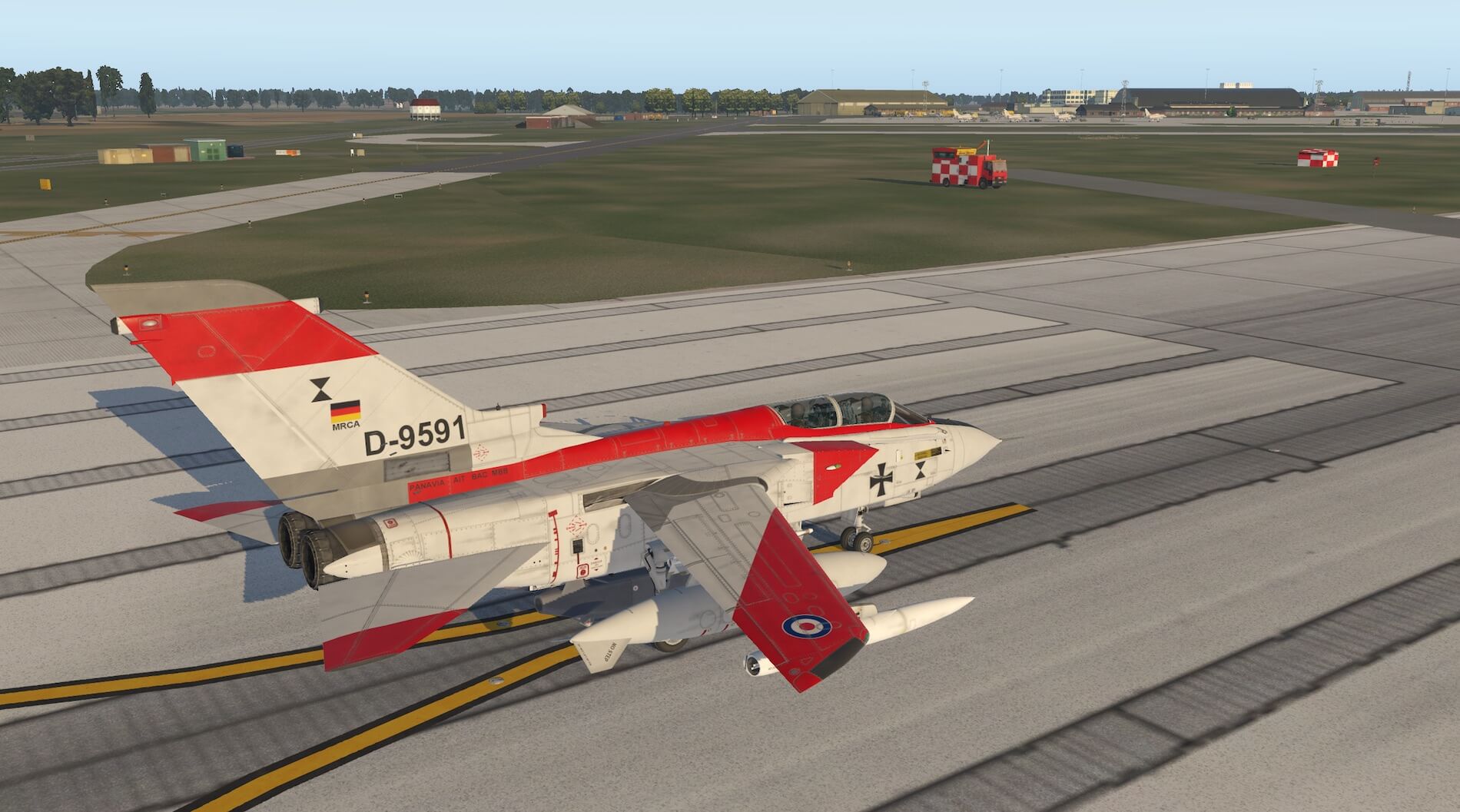







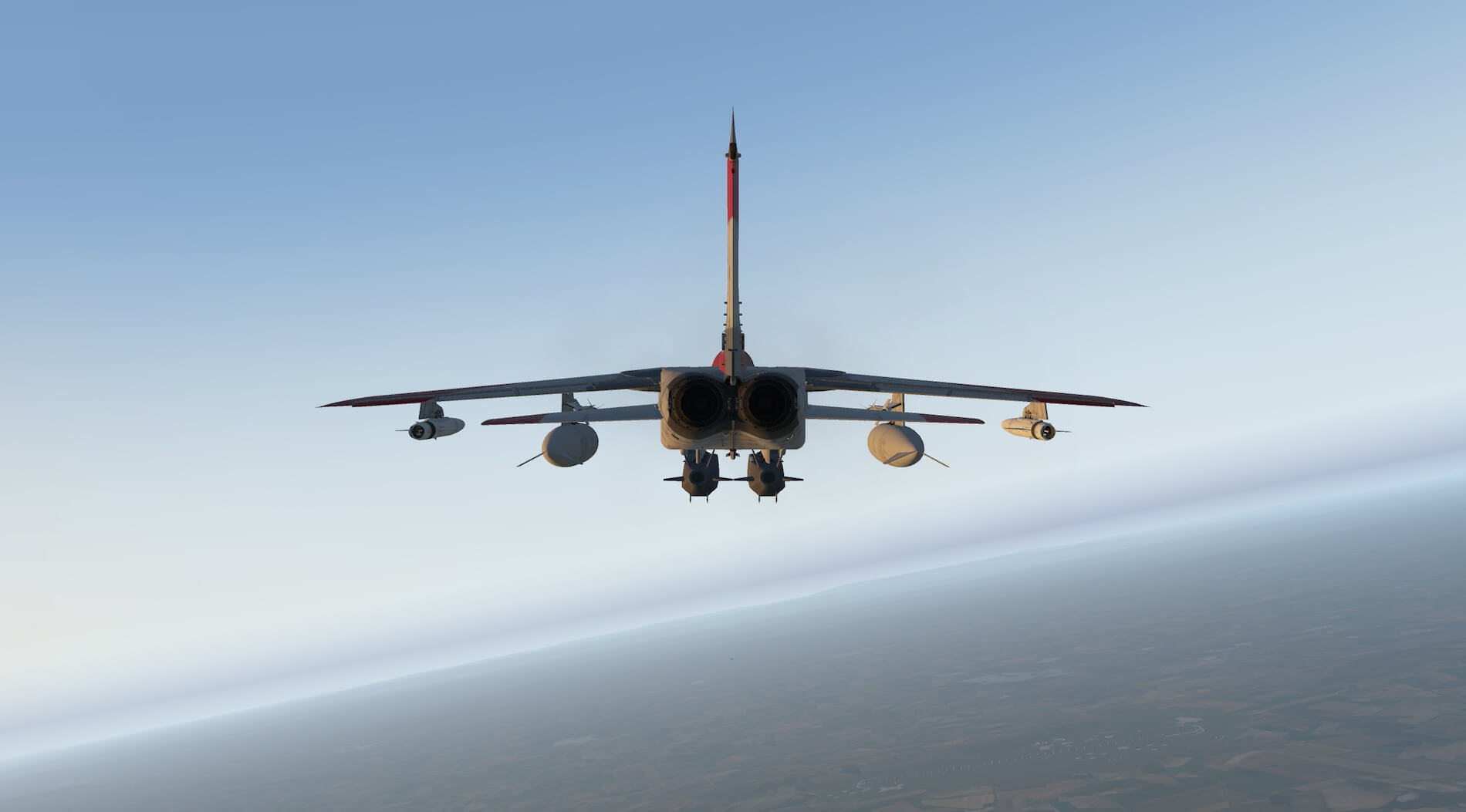

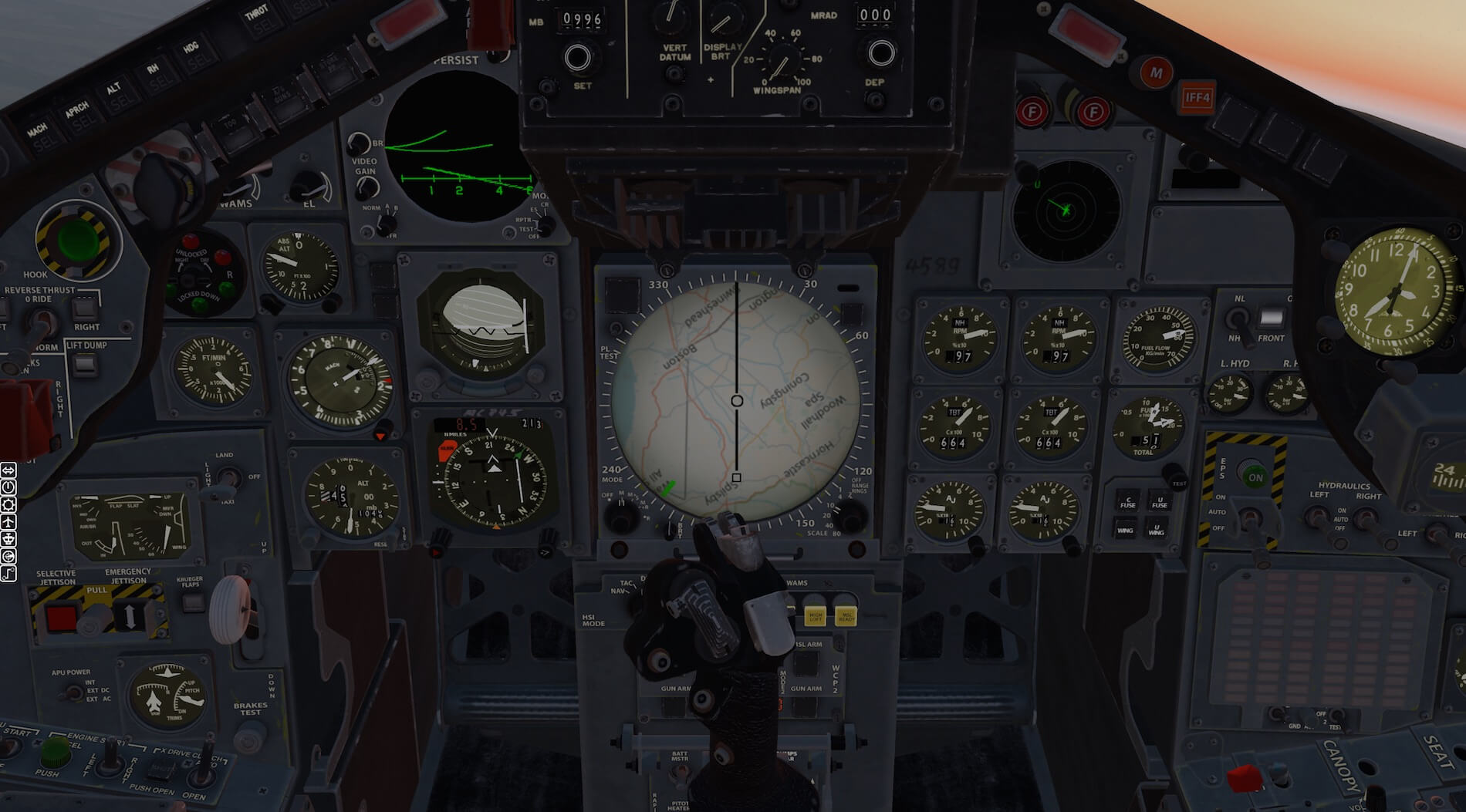




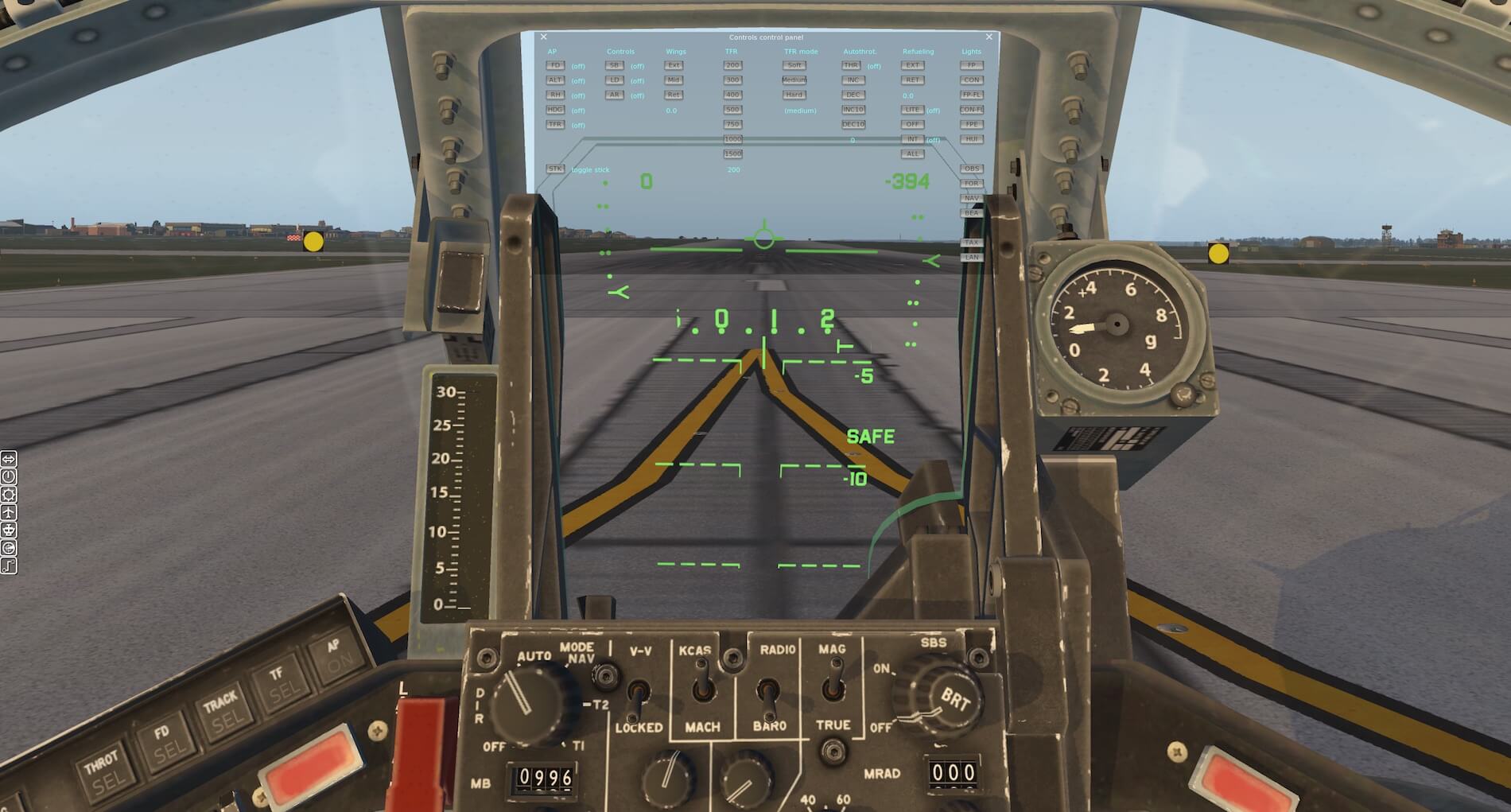
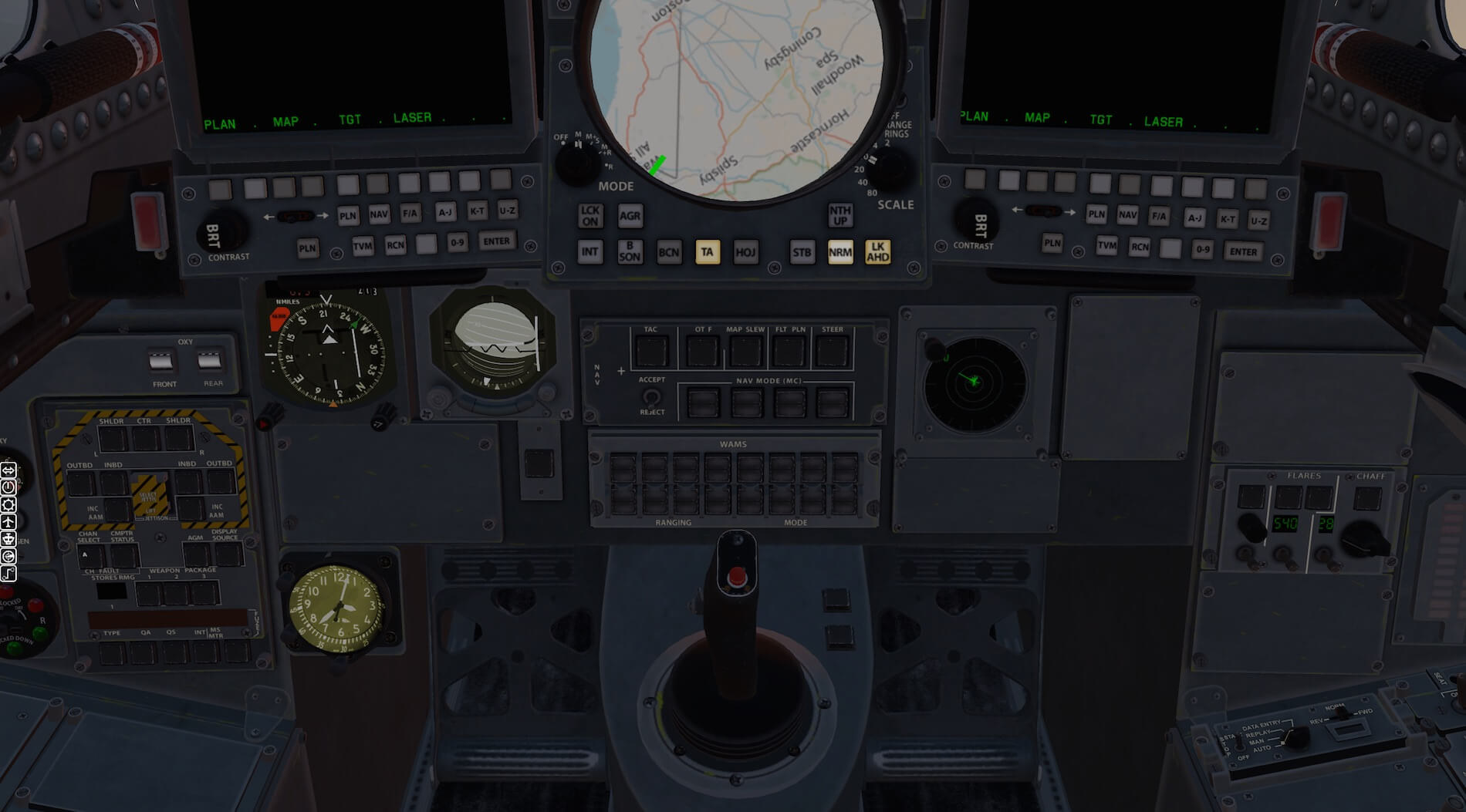

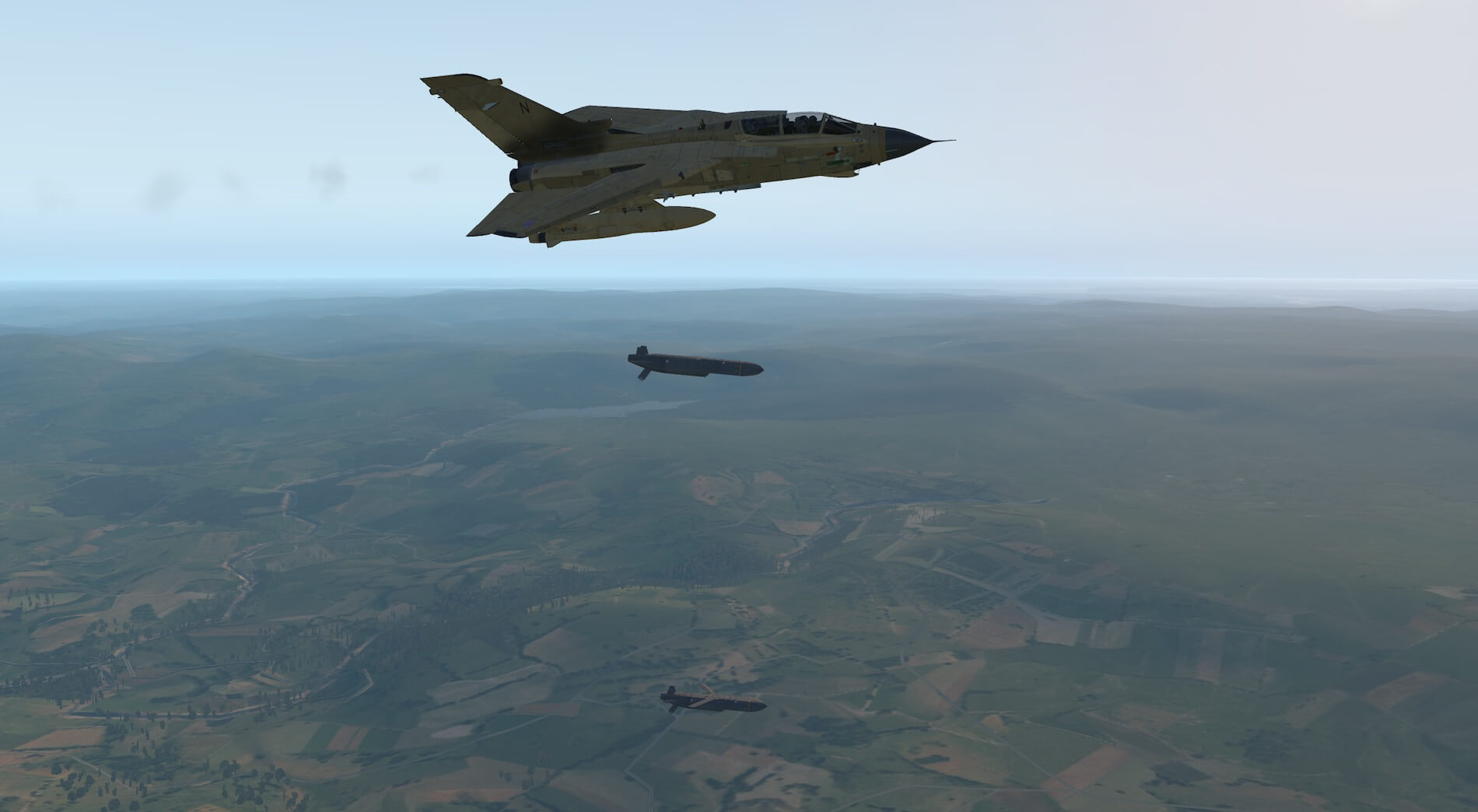


0 Comments